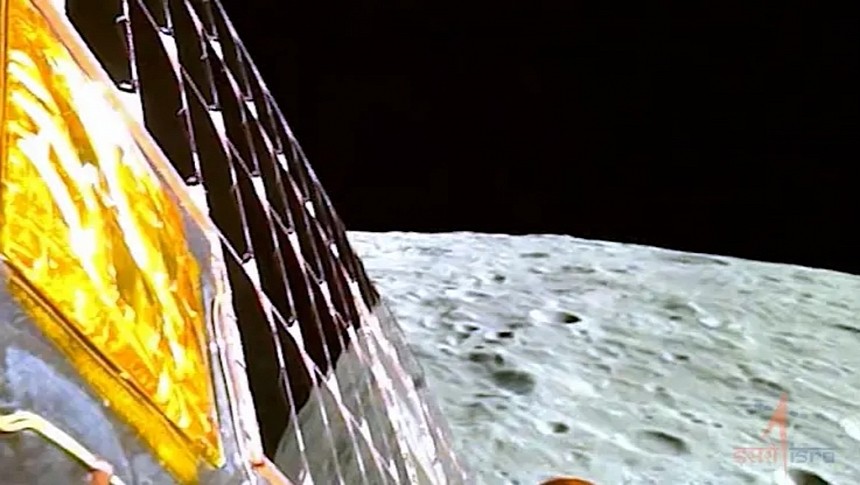"This success belongs to all of humanity," is what India's Prime Minister Narendra Modi said to describe the gravity of the success of the Chandrayaan-3 spacecraft as it touched down on the surface of the lunar South Pole. In doing so, India is now only the fourth nation behind Russia, China, and the United States to soft-land a probe on the Moon. It signifies that the second great space race will be far more crowded and colorful than the first boogaloo in the late 1960s.
As the four-legged space probe consisting of a lander portion named Kukram and a small rover, Pragyan, landed in a gap between the Manzinus and Simpelius N craters in the southern region of the Moon's near side, the world waited in bated breath. Only days earlier, the Russian space probe Luna 25 had unceremoniously impacted the lunar surface, intending to explore much the same region of the Moon as its Indian counterpart. As China and the U.S. wage a new space race in hopes of sending humans back to the Moon first, a smaller race between Russia and India has already yielded some of the most intense competition between two rival space agencies in decades.
The Chandrayaan-3 probe was launched out of Satish Dhawan Space Centre off the Bay of Bengal on Jul 14th of this year and had been scouting the lunar surface from orbit since August 5th. After a computer glitch led to the abrupt end of the previous Chandrayaan mission, Chandrayaan-2, the pressure was on like never before for the Indian Space Research Organisation (ISRO) to get things right on their third time out on the trot. Now that the hard part is over, the ISRO will busy themselves conducting scientific experiments via both the lander and rover elements of the mission in hopes of learning more about the makeup of lunar polar regolith.
Of course, the million-dollar question on everyone's mind about this region of the Moon is whether the Moon's soil contains sufficient quantities of water ice, which astronauts could use to make drinking water as well as rocket fuel when human-crewed expeditions finally bring people back to the Moon with the Artemis program. Other concerns like learning exactly how meteoroid impacts affect the structure of lunar dust and soil and uncovering the history of the paper-thin lunar atmosphere are further primary objectives for the ISRO to contend with.
But for now, the Chandrayaan-3 probe is almost more of an ambassador for India's presence in deep space than it is just another space probe. As a decree for global space agencies that the U.S. and Russia no longer control the entirety of global space travel, Chandrayaan-3 is helping the world enter a new age of space exploration. One where any nation with enough money and personnel can stake their claim.
The Chandrayaan-3 probe was launched out of Satish Dhawan Space Centre off the Bay of Bengal on Jul 14th of this year and had been scouting the lunar surface from orbit since August 5th. After a computer glitch led to the abrupt end of the previous Chandrayaan mission, Chandrayaan-2, the pressure was on like never before for the Indian Space Research Organisation (ISRO) to get things right on their third time out on the trot. Now that the hard part is over, the ISRO will busy themselves conducting scientific experiments via both the lander and rover elements of the mission in hopes of learning more about the makeup of lunar polar regolith.
Of course, the million-dollar question on everyone's mind about this region of the Moon is whether the Moon's soil contains sufficient quantities of water ice, which astronauts could use to make drinking water as well as rocket fuel when human-crewed expeditions finally bring people back to the Moon with the Artemis program. Other concerns like learning exactly how meteoroid impacts affect the structure of lunar dust and soil and uncovering the history of the paper-thin lunar atmosphere are further primary objectives for the ISRO to contend with.
But for now, the Chandrayaan-3 probe is almost more of an ambassador for India's presence in deep space than it is just another space probe. As a decree for global space agencies that the U.S. and Russia no longer control the entirety of global space travel, Chandrayaan-3 is helping the world enter a new age of space exploration. One where any nation with enough money and personnel can stake their claim.






